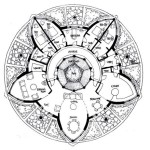How To Make Liquid Fertilizer For Houseplants in Water
Maintaining healthy houseplants indoors necessitates more than just providing adequate light and water. Nutrients, essential for growth and vitality, can become depleted in the soil over time, particularly in potted environments. Liquid fertilizers offer a readily available solution to replenish these nutrients. Creating homemade liquid fertilizer using water provides a cost-effective and environmentally conscious approach to nourishing houseplants. This article outlines several methods for producing liquid fertilizer suitable for use in water-based houseplant care, emphasizing the importance of understanding the nutritional needs of different plant species.
Dechlorination of Water: A Crucial First Step
Before utilizing tap water for liquid fertilizer solutions, dechlorination is a necessary preliminary step. Chlorine, added to municipal water supplies to eliminate bacteria, can be detrimental to beneficial microorganisms residing in the soil and potentially harm plant roots. There are several methods for removing chlorine from tap water:
Standing Water: Allowing tap water to sit uncovered for 24 to 48 hours facilitates the natural evaporation of chlorine. The larger the surface area exposed to the air, the faster the dechlorination process. This method is simple but requires planning ahead.
Boiling Water: Boiling water for 15 to 20 minutes accelerates the removal of chlorine. This method is quicker than standing water but requires the water to cool completely before use. Exercise caution when handling hot water.
Using a Water Filter: Certain water filters are designed to remove chlorine and other impurities. These filters offer a convenient and efficient method for producing dechlorinated water on demand. Ensure the filter is specifically designed for chlorine removal.
Vitamin C: A small amount of Vitamin C (ascorbic acid) can neutralize chlorine and chloramine in water. Using approximately 1/4 teaspoon of crushed Vitamin C tablet per gallon of water quickly removes these chemicals. This method is especially useful when needing dechlorinated water immediately.
Using dechlorinated water as a base for homemade liquid fertilizers ensures that the essential nutrients are delivered without the risk of harming the plant or its soil microbiome. The pH of the water may also be tested and adjusted based on the specific needs of the plants being fertilized.
Compost Tea: A Nutrient-Rich Elixir
Compost tea is a liquid fertilizer derived from steeping compost in water. The process extracts beneficial microorganisms and nutrients from the compost, creating a solution that can improve soil health and provide plants with essential elements. The quality of the compost directly impacts the efficacy of the tea; therefore, using well-decomposed, high-quality compost is essential.
Materials Required: Well-decomposed compost, a breathable bag (such as cheesecloth, burlap, or a nylon stocking), a bucket or container, dechlorinated water, and an optional air pump with an air stone.
Preparation Method: Fill the breathable bag with compost and secure it tightly. Submerge the bag in a bucket of dechlorinated water, ensuring the bag is fully immersed. An air pump with an air stone can be added to aerate the mixture, promoting microbial activity and enhancing nutrient extraction. Allow the mixture to steep for 24 to 48 hours, stirring occasionally. Remove the compost bag and the resulting liquid is compost tea.
Dilution and Application: Compost tea is typically concentrated and requires dilution before application. A general guideline is to dilute the tea with water at a ratio of 1:10 or 1:20, depending on the strength of the compost and the sensitivity of the plants. Apply the diluted compost tea directly to the soil around the base of the plant. Avoid spraying the foliage to prevent fungal issues. The frequency of application can vary depending on the plant’s needs, but a bi-weekly or monthly application is generally sufficient.
Compost tea provides a broad spectrum of nutrients, including nitrogen, phosphorus, potassium, and trace minerals. Furthermore, the beneficial microorganisms in the tea can improve soil structure, enhance nutrient availability, and suppress plant diseases. However, the nutrient content of compost tea can vary widely depending on the compost composition, steeping time, and aeration. Regular monitoring of plant health is recommended to adjust the application rate and frequency as needed.
Banana Peel Fertilizer: Potassium Boost for Flowering Plants
Banana peels are rich in potassium, a macronutrient essential for plant growth, particularly for flowering and fruiting. Using banana peels to create a liquid fertilizer provides a sustainable way to recycle kitchen waste and promote healthy plant development. There are two primary methods for creating banana peel fertilizer: water infusion and fermentation.
Water Infusion Method: This method involves steeping banana peels in water to extract the potassium. Collect banana peels and cut them into small pieces to increase the surface area for extraction. Place the chopped peels in a jar or container and fill it with dechlorinated water. Allow the mixture to sit for one to two weeks, stirring occasionally. The water will gradually turn brown as potassium and other nutrients are released. Strain the liquid to remove the solid banana peel debris. Dilute the resulting banana peel infusion with water at a ratio of 1:5 or 1:10, depending on the concentration. Apply the diluted solution to the soil around the base of the plant.
Fermentation Method: This method involves fermenting banana peels in water with the addition of sugar or molasses to accelerate the fermentation process. Collect banana peels and chop them into small pieces. Place the chopped peels in a jar or container and add a tablespoon of sugar or molasses per peel. Fill the container with dechlorinated water, leaving some headspace at the top. Stir the mixture well to dissolve the sugar or molasses. Cover the container loosely with a lid or cloth to allow gases to escape during fermentation. Allow the mixture to ferment for two to four weeks, stirring occasionally. The mixture will develop a slightly acidic odor. Strain the liquid to remove the solid banana peel debris. Dilute the fermented banana peel solution with water at a ratio of 1:10 or 1:20, depending on the concentration. Apply the diluted solution to the soil around the base of the plant.
Banana peel fertilizer is particularly beneficial for flowering plants such as African violets, orchids, and roses, as well as fruiting plants like tomatoes and peppers. However, it is important to note that banana peel fertilizer primarily provides potassium and may not contain sufficient amounts of other essential nutrients like nitrogen and phosphorus. Therefore, it is often necessary to supplement banana peel fertilizer with other nutrient sources to provide a balanced diet for plants. Regular monitoring of plant health is recommended to ensure adequate nutrient levels.
Eggshell Fertilizer: Calcium for Strong Growth
Eggshells are a readily available source of calcium carbonate, a compound that can improve soil structure, neutralize acidity, and provide plants with essential calcium. Calcium is crucial for cell wall development, nutrient uptake, and overall plant health. Using eggshells to create a liquid fertilizer is a simple and sustainable way to recycle kitchen waste and promote strong plant growth.
Preparation Method: Rinse eggshells thoroughly to remove any remaining egg residue. Allow the eggshells to dry completely. Crush the dried eggshells into a fine powder using a blender, food processor, or mortar and pestle. Alternatively, the eggshells can be baked in an oven at 200°F (93°C) for 10-15 minutes to sterilize them and make them easier to crush.
Liquid Fertilizer Formulation: Add one to two tablespoons of crushed eggshell powder to a gallon of dechlorinated water. Stir the mixture well to ensure the eggshell powder is evenly distributed. Allow the mixture to sit for several days, stirring occasionally. The calcium carbonate in the eggshells will gradually dissolve into the water, creating a calcium-rich solution. Strain the mixture to remove any undissolved eggshell particles. The resulting liquid is eggshell fertilizer.
Application: Apply the eggshell fertilizer to the soil around the base of the plant. It can also be used as a foliar spray, but it is important to dilute the solution further to prevent leaf burn. Eggshell fertilizer is particularly beneficial for plants that require high levels of calcium, such as tomatoes, peppers, and brassicas. However, it is important to note that eggshell fertilizer primarily provides calcium and may not contain sufficient amounts of other essential nutrients. Therefore, it is often necessary to supplement eggshell fertilizer with other nutrient sources to provide a balanced diet for plants. Regularly monitoring plant health is recommended to ensure adequate nutrient levels and adjust the application rate and frequency as needed.
The effectiveness of eggshell fertilizer depends on the particle size of the eggshells and the pH of the water. Finer eggshell particles dissolve more readily than larger particles. Acidic water can also help to dissolve the calcium carbonate in the eggshells. To enhance the solubility of the eggshells, vinegar or lemon juice can be added to the water. However, it is important to use caution when adding acidic substances, as excessive acidity can harm plants. A small amount of vinegar or lemon juice (e.g., one tablespoon per gallon of water) is typically sufficient to enhance calcium dissolution without causing harm.
Understanding Nutrient Needs and Application Rates
Different plant species have varying nutrient requirements. It is crucial to understand the specific needs of each plant to provide the appropriate type and amount of fertilizer. Some plants, such as succulents and cacti, require very little fertilizer, while others, such as flowering plants and vegetables, require regular fertilization.
Nitrogen (N): Promotes leafy growth and overall plant vigor. Deficiency symptoms include yellowing leaves and stunted growth.
Phosphorus (P): Essential for root development, flowering, and fruiting. Deficiency symptoms include stunted growth, dark green leaves, and poor flowering.
Potassium (K): Plays a role in water regulation, nutrient transport, and disease resistance. Deficiency symptoms include yellowing leaf margins, curling leaves, and poor fruit development.
Micronutrients: Essential for various plant functions, including enzyme activity and chlorophyll production. Common micronutrients include iron, manganese, zinc, copper, boron, and molybdenum. Deficiency symptoms vary depending on the specific micronutrient.
When using homemade liquid fertilizers, it is important to start with diluted solutions and gradually increase the concentration as needed. Over-fertilization can be detrimental to plants, causing leaf burn, root damage, and even death. Regular monitoring of plant health is essential to assess the effectiveness of the fertilizer and adjust the application rate and frequency accordingly. A soil test can provide valuable information about the nutrient levels in the soil and help to guide fertilization decisions.
Furthermore, the frequency of fertilization depends on several factors, including the plant species, the growing medium, and the environmental conditions. Actively growing plants typically require more frequent fertilization than dormant plants. Plants grown in well-draining potting mixes may require more frequent fertilization than plants grown in heavier soils. During periods of rapid growth, such as spring and summer, plants may benefit from more frequent fertilization. Conversely, during periods of dormancy, such as fall and winter, fertilization should be reduced or discontinued.
By understanding the nutrient needs of different plant species and carefully monitoring plant health, gardeners can effectively utilize homemade liquid fertilizers to promote healthy growth and vibrant blooms.

Top 10 Homemade Liquid Fertilizers Diy Plant Food That Will Transform Your Garden

Best Natural Fertilizer For Any Water Plants Homemade Free
:max_bytes(150000):strip_icc()/make-your-own-fertilizer-1388159-hero-025e07a9b96840568b5eb5050f4bab10.jpg?strip=all)
How To Make Your Own Fertilizer

8 Organic Liquid Fertilizers You Can Make Feathers In The Woods

Make A Simple Organic Fertilizer For Healthy Indoor Plants Garden Therapy

Plants That Grow In Water A No Fuss Way To Houseplants

Make A Simple Organic Fertilizer For Healthy Indoor Plants Garden Therapy

Effective Organic Fertilizer For Houseplants Boost Growth

11 Diy Homemade Plant Fertilizers With Recipes Gardening

7 Houseplants You Can Grow In Water No Soil Required








